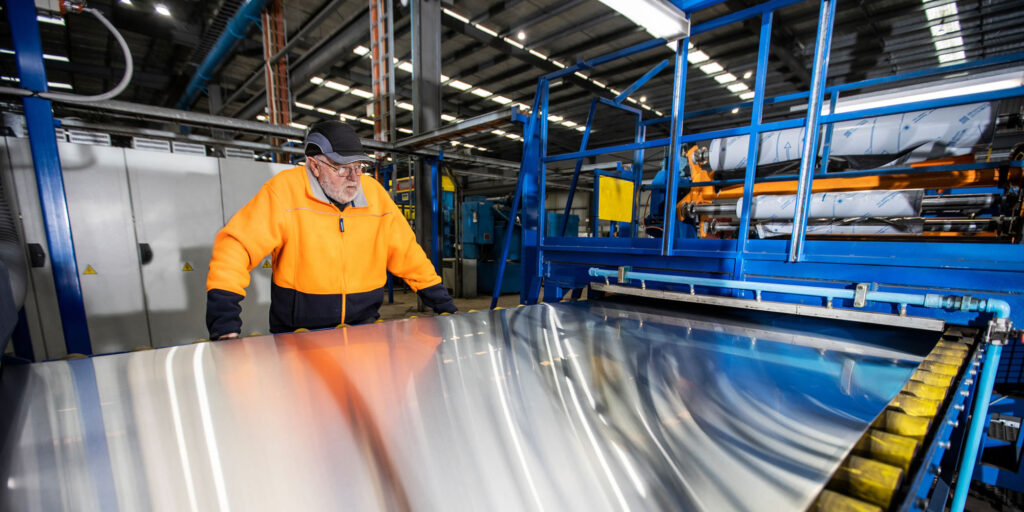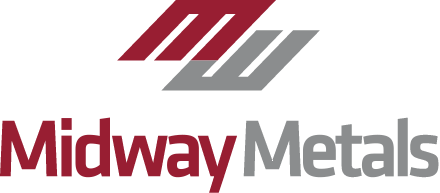


When selecting stainless steel, choosing between 304 and 316 stainless steel is a key decision, especially when factors like corrosion, resistance and durability are critical.
These two stainless steel alloys are the most commonly used, but their unique chemical compositions make them suited for different environments and applications. While both offer excellent corrosion-resistant properties, the addition of molybdenum in 316 stainless steel provides drastically enhanced corrosion resistance, particularly in harsh environments. Understanding these differences ensures you select the right material for your stainless steel products.
What is 304 Stainless Steel?
304 stainless steel is a widely used austenitic stainless steel that provides an excellent balance of strength, affordability, and corrosion resistance. It consists of a high chromium content (18-20%) and a notable amount of nickel (8-10.5%). These elements create a protective oxide layer on the surface of the steel, which prevents it from rusting under most conditions.
However, in more aggressive environments, particularly those exposed to chlorides (such as coastal areas or industrial sites), 304 stainless steel may be prone to localised corrosion such as chloride pitting. This makes it better suited for indoor or less corrosive environments. Applications of 304 stainless steel include kitchen equipment, food processing equipment, and storage tanks, where the steel isn’t frequently exposed to strong disinfectants or high levels of salt.
What is 316 Stainless Steel?
For applications where superior corrosion resistance is required, 316 stainless steel becomes the go-to material. It has a similar basic chemical composition as 304 but adds 2-3% molybdenum, a key difference that drastically enhances its corrosion resistant properties. This makes it particularly valuable in harsh environments such as marine environments and areas exposed to chlorinated solutions or industrial chemicals.
The addition of molybdenum in 316 stainless steel improves its resistance to salt, seawater, and chlorides, preventing localised corrosion like pitting, which is common in 304 stainless steel under the same conditions. 316 stainless is also more resistant to higher temperatures and scaling, which makes it ideal for applications like pharmaceutical and medical equipment, marine applications, and chemical processing plants.
Comparing 304 vs 316 Stainless Steel Composition
The core chemical composition of both 304 and 316 stainless steels includes chromium, and nickel. However, the key distinction lies in the presence of molybdenum in 316 stainless steel, which allows it to outperform 304 stainless steel in environments rich in salt and chlorides.
304 Stainless Steel Composition:
- Iron
- 18-20% Chromium
- 8-10.5% Nickel
- Less than 0.08% Carbon
316 Stainless Steel Composition:
- Iron
- 16-18% Chromium
- 10-14% Nickel
- 2-3% Molybdenum
- Less than 0.08% Carbon
This key difference in composition results in 316 stainless steel offering superior corrosion resistance, especially in chloride-exposed environments and marine conditions. 304 stainless steel, while excellent for general-purpose use, is better suited for situations where cost-effectiveness and resistance to less aggressive corrosive substances are required.
Common Applications and Use Cases



When selecting between the two, it’s essential to match the stainless steel’s properties to your specific use case.
- 304 Stainless Steel: This is ideal for applications where exposure to the elements is minimal. It’s commonly used in the manufacturing of kitchen appliances, storage tanks, and decorative architectural components. Because it resists corrosion in milder environments, it’s perfect for indoor applications or those exposed to milder acids.
- 316 Stainless Steel: The marine grade of stainless steels, 316 is used extensively in marine applications, medical surgical instruments, and chemical environments. It offers excellent corrosion resistance even in salt exposure or in the presence of strong disinfectants. Industries such as pharmaceuticals, where sterilisation and corrosion prevention are crucial, frequently rely on 316 stainless steel.
Corrosion Resistance and Durability: 304 vs 316
The superior resistance of 316 stainless steel to very aggressive environments, such as those involving seawater or acidic chemicals, makes it the better choice for highly corrosive settings. 304 stainless steel is more vulnerable to chloride pitting, which can lead to structural damage over time when used in saline environments or those exposed to industrial chemicals.
Both stainless steel grades share some characteristics, such as resistance to rust and oxidation. However, when 316 stainless steel is exposed to harsher conditions, the molybdenum component provides an extra layer of defence, making it a more corrosion-resistant option for industries that face more nickel-rich, localised corrosion challenges.
Cost Considerations: 304 vs 316 Stainless Steel
From a cost perspective, 304 stainless steel is more affordable due to the absence of molybdenum and the lower percentage of nickel. For projects where corrosion exposure is minimal, 304 stainless steel offers a versatile balance of cost, durability, and performance. However, the extra investment in 316 grade is often justified in industries where long-term durability and resistance to corrosive elements are crucial.
Conclusion
In summary, when comparing 304 vs 316 stainless steel, it’s clear that 304 stainless steel excels in affordability and general corrosion resistance, while 316 stainless steel is ideal for more extreme, chloride-exposed environments. Your choice between these two austenitic stainless steels will largely depend on the specific conditions in which the material will be used. If cost is a primary concern and exposure to saltwater or harsh chemicals is minimal, 304 stainless steel will serve you well. However, for applications requiring excellent resistance to corrosion and resilience against more aggressive elements, 316 stainless steel is the better option.
For expert guidance and to source high-quality stainless steel materials, partnering with a reliable stainless steel supplier ensures you get the best product suited to your project’s specific needs.
